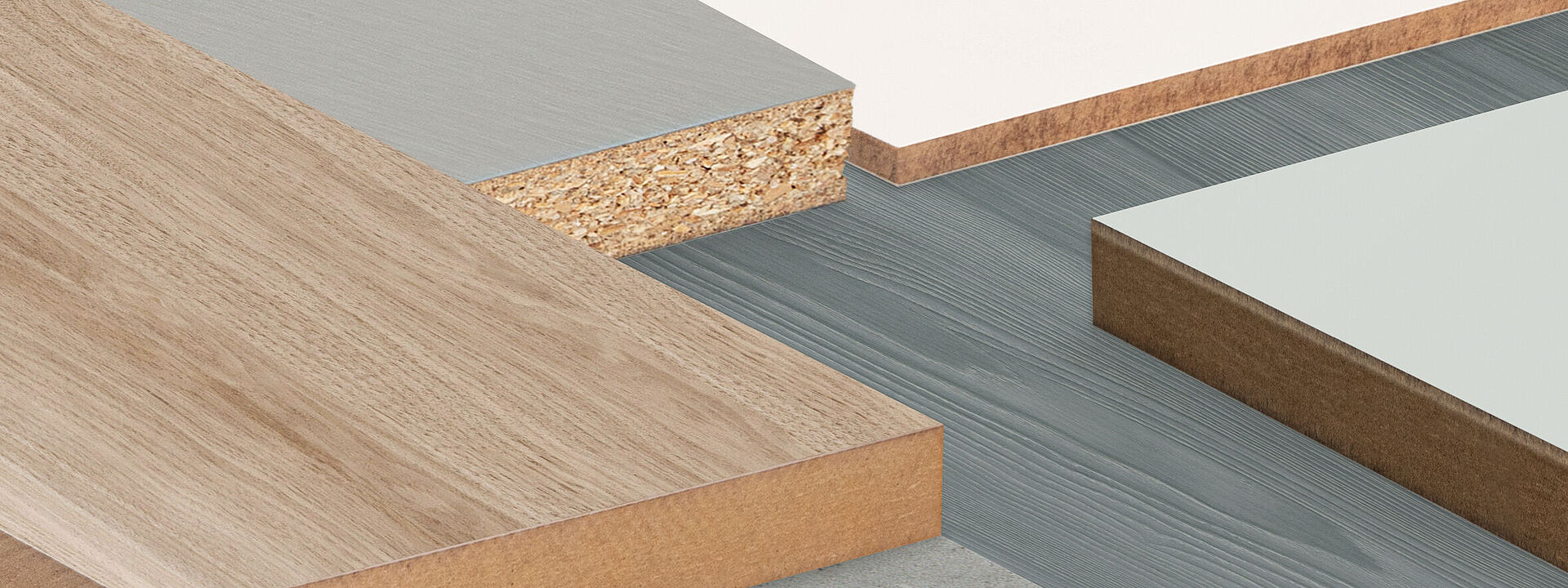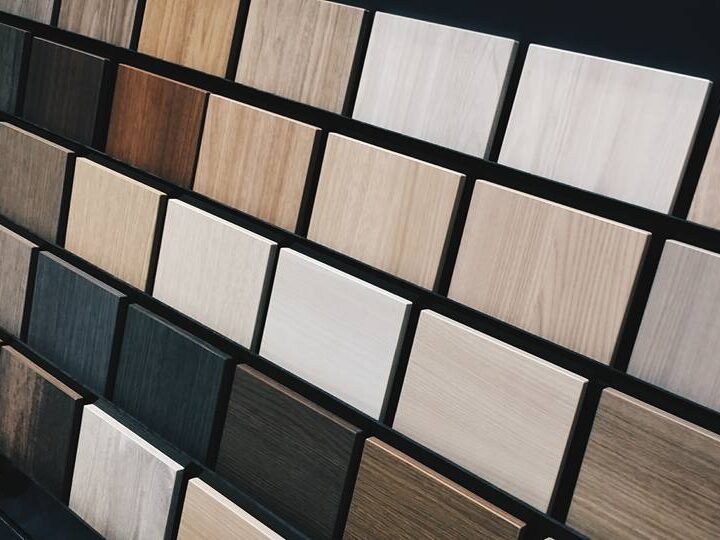When selecting materials for retail fixtures, surfaces play a critical role in both aesthetics and functionality. Two common surface materials used in the retail industry are laminate and melamine. Both are popular for their durability, versatility, and cost-effectiveness, but they differ in several key areas that can impact their suitability for various retail applications.
This essay will compare laminate and melamine in terms of their composition, durability, aesthetic options, ease of maintenance, and cost, providing insights to help make informed decisions when choosing the right surface for retail fixtures.
1. Composition and Manufacturing Process
To understand the differences between laminate and melamine, it’s essential to first look at how each material is made.
Laminate
Laminate is a multi-layered synthetic material, typically composed of three layers: a base layer of paper or fabric, a printed decorative layer that gives the material its appearance, and a top layer of a transparent, protective plastic coating made from melamine resin. These layers are bonded together under high heat and pressure, creating a durable, hard-wearing surface that is commonly used on countertops, furniture, and retail fixtures.
The decorative layer can mimic a variety of materials, such as wood, stone, or metal, offering a wide range of design possibilities. High-pressure laminate (HPL) is the most common type used in commercial settings, known for its robustness and resistance to wear and tear.
Melamine
Melamine, on the other hand, is a specific type of laminate that is directly bonded to a substrate, typically particleboard or MDF (medium-density fiberboard). The process involves impregnating a single sheet of decorative paper with melamine resin, which is then pressed onto the substrate under heat and pressure. This results in a thinner, less durable surface compared to traditional laminate but one that is still widely used due to its affordability and ease of application.
Melamine is often used for furniture, cabinetry, and other applications where cost is a significant factor. It provides a clean, modern look with a smooth finish, although it may not be as robust as other types of laminate.

2. Durability and Performance
Durability is a crucial consideration in retail environments, where surfaces are subject to constant use and potential damage. Both laminate and melamine offer different levels of performance in this regard.
Laminate Durability
Laminate surfaces, especially high-pressure laminate, are known for their exceptional durability. They are resistant to scratches, impacts, and stains, making them ideal for high-traffic areas in retail spaces. The top protective layer of laminate helps prevent damage from everyday wear and tear, and its ability to resist moisture and heat further enhances its longevity.
Due to its strength, laminate is often used in areas that experience heavy usage, such as countertops, display units, and shelving in retail stores. It can withstand the demands of a busy environment without showing signs of significant wear, making it a long-lasting choice for retail fixtures.
Melamine Durability
Melamine, while also durable, does not offer the same level of resistance as laminate. It is more prone to chipping and scratching, especially along the edges, where the material is most vulnerable. Additionally, melamine surfaces can be less resistant to moisture and heat, which may lead to warping or damage over time if not properly maintained.
That said, melamine can still be a suitable option for areas with lower traffic or where the fixtures are not subject to heavy use. For example, it is commonly used in cabinetry or display cases where durability is important, but the fixtures do not face the same rigorous demands as countertops or shelving.

3. Aesthetic Options and Design Flexibility
The visual appeal of retail fixtures is another important factor, as the appearance of surfaces can significantly influence the overall atmosphere of a store. Laminate and melamine offer different aesthetic possibilities.
Laminate Aesthetic Options
Laminate is highly versatile in terms of design. The decorative layer can be printed with almost any pattern, color, or texture, allowing for a vast range of aesthetic options. Whether mimicking the look of natural wood, marble, or metal, laminate can be tailored to fit the specific design needs of a retail space.
In addition to standard designs, laminate can also be custom-printed with logos, branding elements, or bespoke patterns, offering a unique opportunity for retailers to reinforce their brand identity through their fixtures. The ability to achieve a high-end look at a fraction of the cost of real materials makes laminate a popular choice for retail environments aiming for a premium appearance.
Melamine Aesthetic Options
While melamine also offers a variety of colors and patterns, its design flexibility is somewhat more limited compared to laminate. The decorative paper used in melamine is often pre-printed with a narrower selection of patterns, typically focusing on simple, modern designs like solid colors or wood grains.
However, melamine still provides a clean, sleek appearance that can be very effective in certain retail settings, particularly those aiming for a minimalist or contemporary look. The smooth finish of melamine surfaces adds to their modern appeal, though they may lack the depth and texture that can be achieved with laminate.
4. Ease of Maintenance
Maintaining the appearance and cleanliness of retail fixtures is essential for creating a welcoming environment for customers. Both laminate and melamine are relatively easy to maintain, but there are some differences to consider.
Maintaining Laminate
Laminate surfaces are generally low-maintenance and easy to clean. The non-porous top layer resists staining and does not absorb liquids, making it simple to wipe down with a damp cloth and mild detergent. This makes laminate particularly suitable for areas where spills or stains are likely to occur, such as checkout counters or food service areas in retail spaces.
The durability of laminate also means that it can withstand frequent cleaning without showing signs of wear, making it a practical choice for fixtures that need to look fresh and clean at all times.
Maintaining Melamine
Melamine is also easy to clean, though it may require a bit more care to avoid damaging the surface. Like laminate, it is non-porous, so it resists stains and can be cleaned with a damp cloth and mild cleaner. However, due to its lower durability, harsh cleaning chemicals or abrasive sponges should be avoided, as they can scratch or dull the surface.
Melamine’s susceptibility to chipping, particularly along the edges, means that it may require more frequent touch-ups or repairs to maintain its appearance. In retail environments where aesthetics are crucial, this could be a consideration when choosing between laminate and melamine.
5. Cost Considerations
Cost is always a significant factor in material selection, especially for businesses looking to outfit large retail spaces. Laminate and melamine offer different cost profiles, which can influence the decision-making process.
Cost of Laminate
Laminate, particularly high-pressure laminate, tends to be more expensive than melamine due to its greater durability and design flexibility. The cost can vary depending on the specific design and thickness of the laminate, as well as whether custom printing or special finishes are required.
While laminate may require a higher initial investment, its long lifespan and ability to withstand heavy use can make it a cost-effective choice in the long run, particularly in high-traffic retail environments where durability is a priority.
Cost of Melamine
Melamine is generally more affordable than laminate, making it an attractive option for budget-conscious projects. Its lower cost makes it feasible to use in large quantities, such as for shelving, cabinetry, or other fixtures where high durability is not as critical.
However, the potential for higher maintenance costs due to its susceptibility to damage may offset some of the initial savings. In environments where fixtures need to be replaced or repaired frequently, the long-term cost of melamine could approach or even exceed that of laminate.
Conclusion: Choosing Between Laminate and Melamine
The choice between laminate and melamine ultimately depends on the specific needs and priorities of the retail environment. Laminate offers superior durability, design flexibility, and ease of maintenance, making it an excellent choice for high-traffic areas and fixtures that need to withstand rigorous use. Its higher cost is often justified by its longevity and aesthetic versatility.
On the other hand, melamine provides a cost-effective solution with a clean, modern appearance that works well in less demanding applications. While it may not be as robust as laminate, it can still be a practical option for areas with lower traffic or where budget constraints are a primary concern.
In making the decision between laminate and melamine, retailers should consider factors such as the intended use of the fixtures, the level of wear and tear they are likely to face, the desired aesthetic, and the available budget. By carefully weighing these considerations, businesses can select the surface material that best meets their needs, ensuring that their retail space is both functional and visually appealing.

